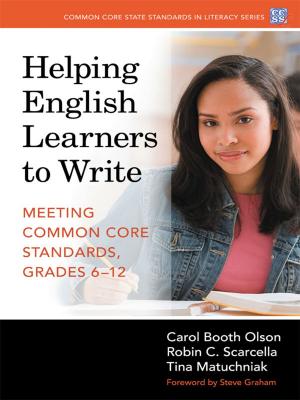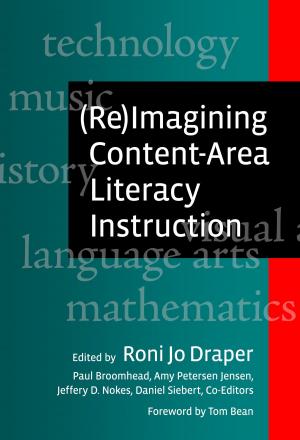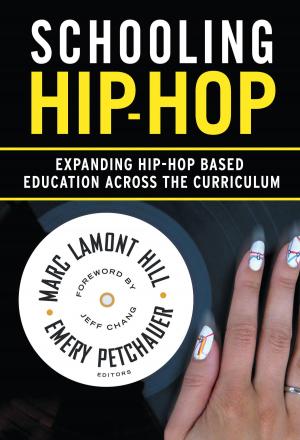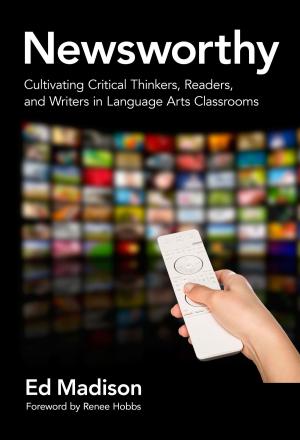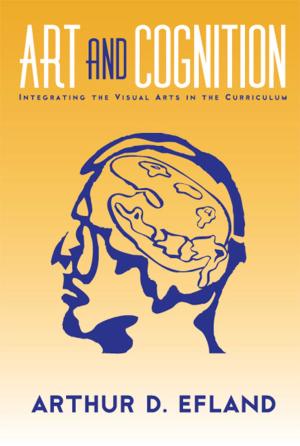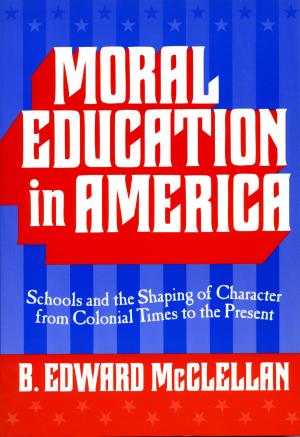Wham! Teaching with Graphic Novels Across the Curriculum
Nonfiction, Reference & Language, Education & Teaching, Educational Theory, Curricula, Language Arts, Literacy, Teaching, Teaching Methods| Author: | William G. Brozo, Gary Moorman, Carla Meyer | ISBN: | 9780807772485 |
| Publisher: | Teachers College Press | Publication: | December 15, 2009 |
| Imprint: | Language: | English |
| Author: | William G. Brozo, Gary Moorman, Carla Meyer |
| ISBN: | 9780807772485 |
| Publisher: | Teachers College Press |
| Publication: | December 15, 2009 |
| Imprint: | |
| Language: | English |
Graphic novels are an excellent medium to motivate today’s youth to become independent learners and thinkers. This practical guide shows secondary school teachers how to incorporate graphic novels into content area instruction as a tool for meeting the needs of diverse learners and achieving the goals of the Common Core State Standards. The authors provide instructional guidelines with classroom examples that demonstrate how graphic novels can be used to expand content knowledge and literacy in science, social studies, math, and English/language arts. Teachers will appreciate the book’s specific suggestions for selecting graphic novels and for employing responsive practices that will build students’ reading, writing, speaking, listening, and media competencies.
“The range and complexity of graphic novels being published right now is simply amazing to me. . . . They are part of what should be a balanced array of texts that all can read, enjoy, and learn from. In this volume, the authors point to this proliferation, as well as the educative potential of graphic novels. After reading its pages, I feel others will agree with me that they have done an excellent job pointing out how graphic novel creators such as Jim Ottaviani and Larry Gonick communicate much about history, science, and mathematics while also making connections to comprehension and thinking skills that accompany both literacy and content-specific learning.”
—From the Foreword by Stergios Botzakis, assistant professor of adolescent literacy in the Theory and Practice in Teacher Education Department at The University of Tennessee, Knoxville
“The authors have set forth on a task I feel long is overdu—connecting the literacy potential of graphic novels to the content areas. This book is a wonderful contribution to the field of content area literacy studies.”
—Michael D. Boatright, assistant professor, Department of English, Western Carolina University
Book Features:
- Advice for selecting and evaluating graphic novels.
- Teaching strategies for each of the four major content domains.
- Guidance for aligning instruction with the Common Core State Standards.
- A list of educational graphic novels organized by content area.
- Study group questions.
William G. Brozo is a professor of literacy in the Graduate School of Education at George Mason University in Fairfax, Virginia, and author of RTI and the Adolescent Reader. Gary Moorman is professor emeritus at Appalachian State University in Boone, North Carolina. Carla K. Meyer is an assistant professor in the Reading Education and Special Education Department at Appalachian State University.
Graphic novels are an excellent medium to motivate today’s youth to become independent learners and thinkers. This practical guide shows secondary school teachers how to incorporate graphic novels into content area instruction as a tool for meeting the needs of diverse learners and achieving the goals of the Common Core State Standards. The authors provide instructional guidelines with classroom examples that demonstrate how graphic novels can be used to expand content knowledge and literacy in science, social studies, math, and English/language arts. Teachers will appreciate the book’s specific suggestions for selecting graphic novels and for employing responsive practices that will build students’ reading, writing, speaking, listening, and media competencies.
“The range and complexity of graphic novels being published right now is simply amazing to me. . . . They are part of what should be a balanced array of texts that all can read, enjoy, and learn from. In this volume, the authors point to this proliferation, as well as the educative potential of graphic novels. After reading its pages, I feel others will agree with me that they have done an excellent job pointing out how graphic novel creators such as Jim Ottaviani and Larry Gonick communicate much about history, science, and mathematics while also making connections to comprehension and thinking skills that accompany both literacy and content-specific learning.”
—From the Foreword by Stergios Botzakis, assistant professor of adolescent literacy in the Theory and Practice in Teacher Education Department at The University of Tennessee, Knoxville
“The authors have set forth on a task I feel long is overdu—connecting the literacy potential of graphic novels to the content areas. This book is a wonderful contribution to the field of content area literacy studies.”
—Michael D. Boatright, assistant professor, Department of English, Western Carolina University
Book Features:
- Advice for selecting and evaluating graphic novels.
- Teaching strategies for each of the four major content domains.
- Guidance for aligning instruction with the Common Core State Standards.
- A list of educational graphic novels organized by content area.
- Study group questions.
William G. Brozo is a professor of literacy in the Graduate School of Education at George Mason University in Fairfax, Virginia, and author of RTI and the Adolescent Reader. Gary Moorman is professor emeritus at Appalachian State University in Boone, North Carolina. Carla K. Meyer is an assistant professor in the Reading Education and Special Education Department at Appalachian State University.


